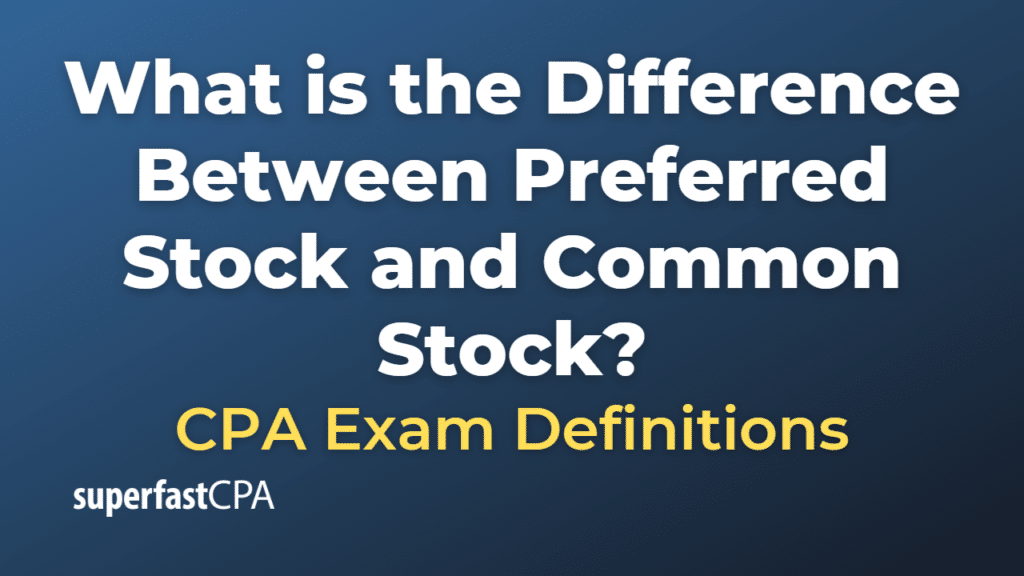Difference Between Preferred Stock and Common Stock
Preferred stock and common stock are two different types of shares that a company can issue, and they come with different rights for their holders. Here are the main differences:
Common Stock:
- Voting Rights: Common shareholders usually have voting rights. They can vote on corporate issues, such as the board of directors and corporate policies.
- Dividends: Dividends for common stockholders are not guaranteed and are decided by the company’s board of directors. If the company is profitable and declares dividends, common shareholders receive them, but they are last in line after creditors, bondholders, and preferred shareholders.
- liquidation Rights: In case of company liquidation, common stockholders have the right to a company’s assets only after bondholders, other debt holders, and preferred stockholders have been paid in full.
- Voting Rights: Preferred stockholders usually do not have voting rights. However, some types of preferred stock come with voting rights when certain conditions are met.
- Dividends: Preferred stockholders receive dividends before common stockholders, and these dividends are usually fixed and guaranteed. In some cases, if the company doesn’t pay the dividend, it accumulates and must be paid in full before any dividends are paid to common stockholders. This feature is known as “cumulative” preferred stock.
- Liquidation Rights: In the event of company liquidation, preferred stockholders have a higher claim on assets than common stockholders, though still after creditors and debt holders.
- Convertibility: Some preferred shares have a feature that allows them to be converted into a certain number of common shares.
In a nutshell, preferred stock can be seen as a hybrid security, having characteristics of both equity (like common stock) and debt (like bonds). It offers less risk (given its preferential treatment in dividends and liquidation) but also less potential reward compared to common stock.
Example of the Difference Between Preferred Stock and Common Stock
Let’s use a hypothetical company, TechCo, as an example:
TechCo decides to issue two types of stock: common stock and preferred stock.
Common Stock:
Investor A buys 100 shares of TechCo’s common stock at $10 per share. As a common shareholder, Investor A now has voting rights in TechCo and may receive dividends, but those dividends are not guaranteed. TechCo has a great year and decides to issue a dividend of $1 per share. Investor A receives $100 ($1 * 100 shares).
However, the following year, TechCo has a bad year and decides not to issue any dividends. Investor A, as a common shareholder, does not receive any dividend that year.
Preferred Stock:
Investor B buys 100 shares of TechCo’s preferred stock at $20 per share. The preferred stock pays a fixed annual dividend of 5%. This means Investor B is guaranteed a dividend of $100 every year ($20 * 100 shares * 5%).
Even when TechCo has a bad year and doesn’t pay dividends to its common shareholders, Investor B still receives the $100 dividend because preferred dividends are guaranteed (assuming these are not deferrable dividends).
Additionally, if TechCo were to be liquidated, Investor B would be paid before Investor A, after debt holders and creditors. However, Investor B usually doesn’t have voting rights at TechCo’s shareholder meetings, unlike Investor A.
In this simplified example, you can see the different rights and potential returns for common and preferred shareholders. It’s important to note that real-world conditions can be much more complex and can vary from company to company. Always read the terms of any stock before making an investment.













